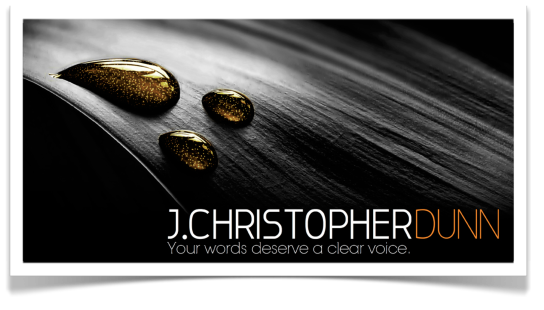When you stand or sit in your recording area (whatever your booth may be), are the tools you need at arm’s-length away? I’m almost positive your copy or music stand has at least one item you use every time you record. Maybe a pencil? A stopwatch? A good luck Beanie Baby? Almost everybody has something. At the very least a script.
The accumulation of booth gear doesn’t necessarily reveal the type of person you’ve become. It’s not a reflection of what makes you, you. Instead, it’s what makes you comfortable so you can do an excellent job recording and impress the heck out of your clients who will shower you with repeat work. It’s all important stuff.

Big Office Clip– It’s a simple and efficient headphone hanger. However, since it’s two wires doing the job, the clip has destroyed the padded head cushion covering. There are better choices, like this from Sweetwater- K&M 16080 Headphone and Cable Hook.. (Also check out the K&M 16020 Drink Holder.)
Headphones – I’m using my Sennheiser HD 280 Pros less for self-directed projects but find them necessary for remote booth direction. They spend most of the time on my editing desk.
iPad – Going green is a good choice to reduce printer/paper usage. Printed scripts in the booth are becoming more rare with each passing year. Apple’s iPad (or similar tablet) is the way to go. Mine is an iPad 2, which I bought new in 2011, and with its 9.7-inch display, it’s a good size for reading scripts.
However, while visiting the Apple Store recently, I saw the bigger display of the iPad Pro (12.9-inches), and I think it’d be a sweet upgrade. I would see more of the script on a brighter, crisper display. That’s a win for my eyeballs.
Mighty Bright Light – On those few occasions where I print a script or need to read from an actual book, this light is fantastic for its brightness and adjustability. Since I purchased mine, Mighty Bright has created new, brighter versions that appear to take up less space.
In Your Face iPhone Holder – Phone-patched sessions have become more common and the In Your Face iPhone Holder is a handy place to mount my phone.
Carpet Sample – A music stand is nothing but a flat piece of sheet metal on a pipe. The flat surface can produce unwanted sound artifacts, which are muted with a carpet sample.
Make a trip to your local carpet retailer and ask if they have any samples they’d let you take off their hands. Just make sure it’s clean and a color you can live with. And while you’re there, introduce yourself as the person to call for everything VO.
Pencil – This is a carry over from when I was working with paper scripts. I got in the habit of having it in my hand and feel naked when I don’t. It’s handy for gesticulation. Not so good for marking up copy on an iPad.
Dog Clicker – Marking the waveform with a clearly defined click is indispensable during audio editing. I use it to mark mistakes (1 click), takes (2 clicks), and self-guided booth tantrums (countless).
Cork – For the times when I can’t convince my mouth to cooperate, and articulation seems more like fantasy than reality, I rely on my cork. Pop it in. Read the script. Pop it out. Magically, my mouth takes notice and articulation improves.
Bath Towel – When I slapped my carpet sample on my music stand, I quickly saw it was on the small side. Sooo… a bath towel covers the entire stand. It’ provides a bit of contrast and color plus keeps the carpet in place. I know it’s a stretch, but it sounds good, doesn’t’ it?
Do I use all the items every time I’m in session? Nope. One or two items come in handy. The rest are on standby waiting for their chance to be helpful.
Do you have things on your stand (or in your booth) that help you get through a session? What’s the one or two items that make what you do easier? I’d like to hear about them, so leave your comments below.
© 2017 J. Christopher Dunn





 I sat in a restaurant the other day and watched a grade-school sized child endure a massive coughing and sneezing fit. By massive, I mean a series of sneezes followed by a volley of gurgle filled coughs and then more sneezing. While I felt sorry for the tyke, all filled with snotty goo, I was happy to leave her behind as I walked out the door into fresh air.
I sat in a restaurant the other day and watched a grade-school sized child endure a massive coughing and sneezing fit. By massive, I mean a series of sneezes followed by a volley of gurgle filled coughs and then more sneezing. While I felt sorry for the tyke, all filled with snotty goo, I was happy to leave her behind as I walked out the door into fresh air. By far, the watchable with the most recommendations was
By far, the watchable with the most recommendations was  Consistent and unpredictable (in a good way!) best describes
Consistent and unpredictable (in a good way!) best describes 


 Previously in part one of
Previously in part one of 






 During the first part of June, I traveled with family and friends to celebrate a 50th Wedding Anniversary. We took an Alaska cruise for seven-days and enjoyed the beautiful scenery, ports of call; amazing food and entertainment; and each other’s company. It was a relaxing and restful experience.
During the first part of June, I traveled with family and friends to celebrate a 50th Wedding Anniversary. We took an Alaska cruise for seven-days and enjoyed the beautiful scenery, ports of call; amazing food and entertainment; and each other’s company. It was a relaxing and restful experience.
